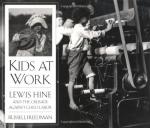|
This section contains 1,262 words (approx. 5 pages at 300 words per page) |

|
Allen R. Myerson
About the author: Allen R. Myerson is a writer for the New York Times.
The economies of third world nations often benefit from the introduction of low-wage manufacturing jobs. Many economists maintain that these "sweatshop" jobs can offer the world's poor a release from malnourishment and destitution. The recent economic development of several nations—including Japan, South Korea, and Taiwan—is rooted in the proliferation of industrial plants that utilize cheap labor. Typically, the alternatives to such jobs are unemployment, increased poverty, or work in even more abusive, hazardous environments. Those concerned about the exploitation of workers must recognize that the presence of sweatshops in the developing world is actually the first step toward economic prosperity.
For more than a century, accounts of sweatshops have provoked outrage...
|
This section contains 1,262 words (approx. 5 pages at 300 words per page) |

|




